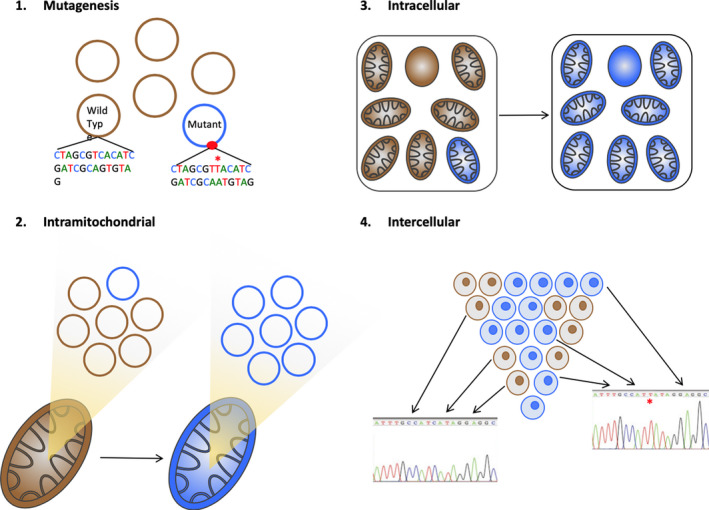Figure 3.

Tracing lineages through heritable genetic changes in mtDNA. (1) mtDNA mutations can occur spontaneously in a single circular genome and (2) through random genome turnover can be present in all copies of the genome within a single mitochondrion and then (3) within the many mitochondria in a single cell, evolving from a heteroplasmic state to a near‐homoplasmic state, a process known as ‘genetic drift’. Spontaneously arising mutations in the cytochrome c oxidase (CCO1) gene that resulted in a demonstrable deficiency of CCO activity (complex IV in the respiratory electron transport chain) were highlighted by Taylor et al, 24 showing that combined histochemistry for CCO activity (staining brown, Figure 4A) and normal nuclear‐encoded succinate dehydrogenase (SDH, complex II) activity (staining blue) was an excellent technique for detecting mtDNA defects. (4) Laser‐capture microdissection of the blue (CCO‐deficient) and brown cells and subsequent sequencing of the mitochondrial genome can identify the mutation. If all CCO‐negative cells in a blue patch have an identical mutation, then it is reasoned the patch has arisen from a single cell, since the minimal odds of exactly the same mutation arising separately in two cells are 2.48 × 109:1 (Reprinted with permission from Ref.22 Copyright 2016, John Wiley and Sons)
